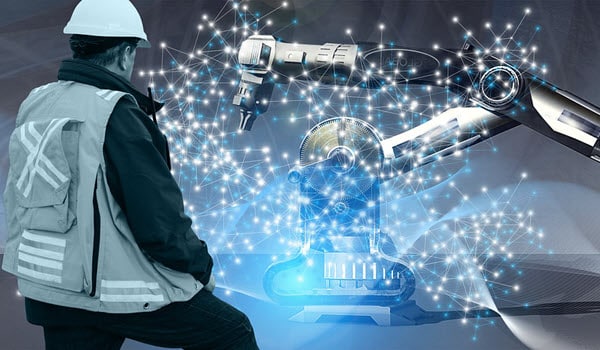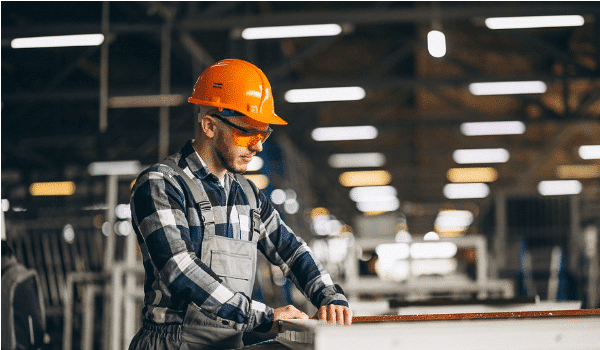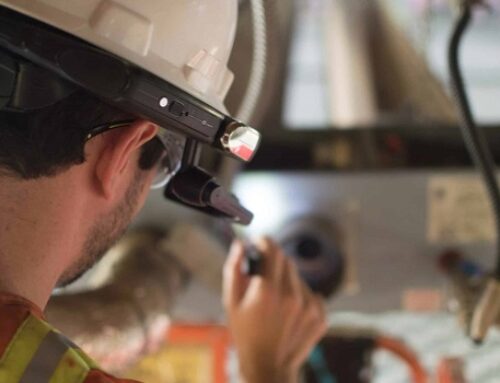Unfortunately, curative maintenance cannot cover all risks. This includes emergency maintenance known as curative maintenance. The latter responds to an unplanned problem aiming to limit complete and prolonged shutdowns of activity.
What is curative maintenance?
In industry, curative maintenance is closely linked to the end of a machine’s life. Curative industrial maintenance is when equipment breaks down and cannot be repaired. We generally carry out this type of maintenance when corrective and preventive maintenance fail.

Example:
If after repair, your equipment breaks down again without being able to perform its functions, then it must be changed. Depending on the machine in question, change may be complete or partial.
In this respect, curative industrial maintenance is carried out when your equipment is severely damaged or has reached the end of its life. As a priority, it enables any company to avoid heavy loss due to equipment malfunction.
It should be noted that in terms of cost, this type of maintenance is more expensive as it is not planned. This also leads to stress. It can even lead to customer dissatisfaction if delivery won’t be on time.
On the other hand, it is essential to distinguish between corrective maintenance and curative maintenance. Note that corrective maintenance mainly consists in repairing equipment temporarily. However, curative maintenance is applied when equipment breaks down and cannot be repaired.
Curative maintenance may be carried out before corrective maintenance.
Impacts and consequences of curative maintenance
Note that curative maintenance always takes priority over other types of maintenance (preventive and corrective). In fact, this type of maintenance generally leads to the shutdown of part of the production activity. Therefore, it is more costly as it is not planned in advance. The main purpose of curative maintenance is to act in the long run.
Simply put, it is not intended to solve the problem. It aims to understand its origin to prevent it from happening again.
Moreover, curative maintenance does not necessarily mean long-term downtime. If a motherboard or hard drive fails on a server, components can be quickly replaced. In fact key elements lie in:
-the identification of the problem to study and understand the breakdown or failure. As a result, it is necessary to document and share contextual information to avoid wasting time. So, reviewing the assessment of technicians who have been involved in preventive and corrective maintenance work in the past helps to speed things up.
-Good management of spare parts stock means that you don’t have to wait long for the right part. This speeds up maintenance operations.
-The ability to mobilize or call on experienced technicians to intervene quickly, either through an external service or within your own team.
What are the operations of curative maintenance?
Curative maintenance leads to an emergency situation for teams and two types of operations can be carried out: troubleshooting and repair.
Troubleshooting (or palliative maintenance)
A troubleshooting operation can provide temporary solution. It saves time and helps control future expenses during repair. There are no specific procedures. Troubleshooting tasks are generally short-lived.
Repair (or corrective maintenance)
For repair, it is a permanent maintenance operation. It is carried out either immediately or following troubleshooting. The repaired machine must regain its original performance.
How can we speed up breakdown resolution?
To remain effective, each company must have a curative maintenance system that has a minimum impact on production rate. However, before troubleshooting, one of the key issues is to quickly determine the cause of the breakdown. This is in order to provide a solution.
Operators must be on front line in case of production shutdown
In industry, factories that run at high speed can be heavily impacted by unexpected breakdowns. This causes an entire workshop to be shut down for days, resulting in significant costs. In this case, the know-how and the experience of a maintenance technician play a pivotal role in resolving these incidents. They significantly reduce the time it takes to diagnose, analyze and repair the affected parts.
Generally, maintenance technicians are not always available in the field when a production incident occurs. That’s why it is important to keep operators and line managers on the front line. This is the best way to deal with this type of situation.
Highly variable resolution time depending on the breakdowns encountered
While there are several problems that can cause a machine to breakdown, it is necessary to use the expertise of maintenance teams. Their mission is to carry out a diagnosis. If no solution is found in-house, it is important to resort to an intervention on equipment (on-site or remotely). This will result in additional repair time.
How to improve the operators’ autonomy so they can resolve an unexpected incident without the need for third-party assistance? The solution is simple: implement a digital tool. It speeds up the execution of corrective maintenance procedures. It helps teams in the field as soon as a breakdown occurs.
Connected curative maintenance to empower field teams
The implementation of a digital curative maintenance tool relies mainly on a phase of expression of the problems encountered. It highlights the defects of machines (impact, frequency, prior signals…). This work is carried out with the industry’s various maintenance experts. This helps to define a digital repository of breakdowns.
As a result, the most critical failures are classified according to field experience or available data recorded. Their behavior is then studied according using the “root cause” method. It is also known as the “5Why” method.
The consolidation of this collective intelligence provides maintenance technicians with additional skills. This enables them to reset the smooth running of equipment faster.
CMMS and curative maintenance management
Ideally, maintenance should not be solely curative. The CMMS solution proves to be the best alternative for achieving the objective of an industrial maintenance service. Above all, it helps to reduce curative maintenance and avoid breakdowns. In addition, CMMS is also useful for various curative operations. Thanks to the history of interventions and traceability, technicians will have a detailed follow up of the machine’s behavior.
Good analysis saves time during any maintenance operation. On the other hand, procedures can be entered into the CMMS, from the simplest to the most complex task.
We can therefore say that the more information this solution has, the easier and more efficient maintenance will be.
How do you move from curative to preventive maintenance?
Hardware breakdown is almost inevitable for most organizations using a lot of equipment. Note that maintenance operations have a significant hourly cost:
- Either through the time of in-house technicians
- Or through the cost of service technicians
That’s why the deployment of a maintenance strategy is quintessential. This ensures that critical assets remain available at all times.
It should be noted that preventive maintenance is defined as maintenance that is carried out frequently and systematically. This is done in order to limit the probability of failure. Maintenance is carried out while an asset is still in operation to prevent it from breaking down unexpectedly.
For example, a machine can be maintained by means of anticipation. This avoids nuisance due to dust accumulation in a filter system.
A good preventive maintenance action consists mainly in planning and defining the right setting of maintenance frequencies you need for your product/ equipment/ asset.
To go from curative to preventive maintenance, you need to understand the benefits of working preventively.
The latest research on preventive maintenance shows:
- Reduced unplanned downtime
- Reduced breakdowns of essential equipment and machinery
- Increased reliability of critical assets
- A decrease in corrective and emergency operations
- Improved service quality
- Lower costs if the repair budget is high
However, there will be a cost on regular actions that will be more frequent. Note that start-up costs are high (settings, implementation, definition of equipment, setting of frequencies…). Not to mention the need for more resources (spare parts, staff…).

What type of industrial maintenance should you choose?
Note that an analysis of your needs is essential to make the right choice between the different types of maintenance. This allows you to better optimize the management of machine breakdowns:
- Maintenance according to your objectives: availability of assets, cost reduction, asset sustainability, workplace safety
- Available technical capacity: automated intervention, CMMS software, remote intervention (or remote maintenance), physical intervention
- Service quality expectations
- Anticipating breakdowns®preventive maintenance
- troubleshooting and repairing equipment®curative maintenance
- Equipment analysis®predictive maintenance
- The nature and the condition of your installments also have an impact on the expected quality of services and fault tolerance.




Leave A Comment